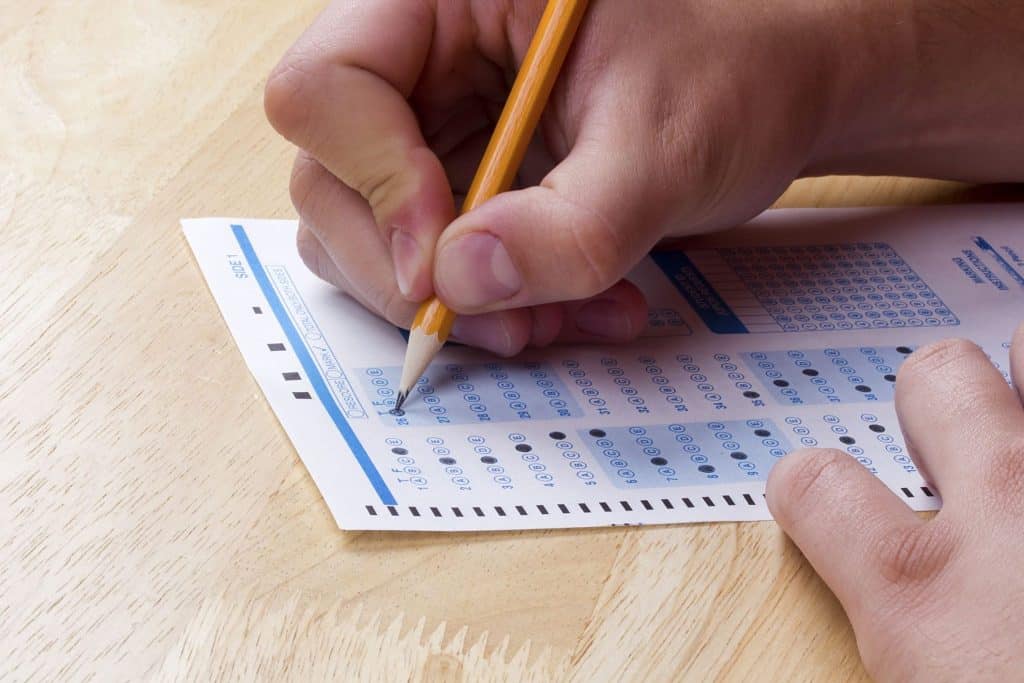
The fact that most schools today give the ACT and SAT standardized tests the same weight when it comes to accepting admissions means that students have the opportunity to decide for themselves which they would prefer to take. In the past, American colleges have used the SAT more religiously than the ACT, but today’s freedom of choice means students can determine which test is likely to bring them the best results.
Deciding which test to take can be a difficult task. Although there is some overlap between the ACT and the SAT, they are very different tests. Students can choose to take both tests, but it’s worth noting that preparing for each can take several months. Most college hopefuls achieve better results by focusing exclusively on one option. Students should understand the differences between the ACT and the SAT to assist in making that all-important decision for their future.
Curriculum Skills or Reasoning?
The first thing to determine in deciding between ACT and SAT testing is where your academic strengths lie. The ACT is a test of achievement that focuses on examining skills learned through the school curriculum, whereas the SAT is often regarded as a test of”reasoning, which can change from one examination to the next. Both include consideration of math, reading, and English, but the SAT does not contain a science component.
The formatting and straightforward style associated with the ACT remains similar from one test to the next, helping students to strategize and prepare in advance. On the other hand, while the SAT maintains the same section types and time allotments, they may be in a different order or have a different numbers of question in any given section.
The Question Formats
The ACT examination comes with four multiple-choice subject tests covering science, reading, math, and English. The idea is to test each area of the test-taker’s educational development and his or her ability to manage college-level academics. Students have a total of 2 hours and 55 minutes to complete their tests, excluding any necessary breaks.
The SAT examination evaluates problem-solving and critical thinking abilities rather than overall educational development, beginning with a 25-minute required essay that starts the writing section. It also includes math and critical reading sections. Students receive 3 hours and 5 minutes to complete the SAT. There are also some format differences – while the SAT has multiple choice sections like the ACT, it also has an area in the math section where test-takers are required to produce answers from scratch.
Vocabulary or Math?
Around 9 of the 60 math problems that appear within the ACT standardized test are concepts that the SAT doesn’t cover, including topics like logarithms, trigonometry, and advanced geometric shapes. Individuals who haven’t covered these subjects at school are likely to experience higher challenges within the ACT math section. Though the student can learn these topics in their spare time, students who struggle in math may have better luck on the SAT. On the other hand, mathematically advanced students may find the ACT easier than some of the trickier subjects covered in the SAT.
For instance, the SAT has particularly vocabulary-specific questions, with each exam containing around 19 questions in the “critical reading” section that focus almost entirely on the extent of a student’s understanding of vocabulary. During these sections, test-takers will fill in the correct words in a test with a bank of multiple-choice selections. There are also contextual problems that ask students what words mean within particular passages. A strong knowledge of vocabulary will be helpful to students in both exams as each includes a reading portion, however, those with a weak vocabulary may find the SAT more challenging than the ACT.
Scoring
When determining which test you should take, it’s worth developing a good understanding of how each test is marked and scored. Both the SAT and the ACT allow a large amount of time for completion, but it’s worth noting that the SAT has 140 questions, whereas the ACT comes with 215. Both essay sections on the ACT and SAT are marked on a scale of 0-12, and two scorers will give the work a number between 0 and 6. The two grades combine to deliver a composite score which are then added onto an English or writing score.
In the past, the SAT grading has received criticism because of its focus on longer essays with bigger vocabulary. Indeed, most experts recommend that the best way to improve a score on the SAT writing test is by using bigger words.
Omissions and Guessing
A big difference between the ACT and SAT comes in the form of whether it’s advisable to guess answers that a student doesn’t know. Because there is no penalty to answering questions wrong in the ACT, guessing is always to the benefit of a student. Using elimination strategies in the process of making educated guesses should help to improve the score of a test-taker. On the other hand, the SAT has a penalty for students who give a wrong answer. Any incorrect response given on the SAT results in a loss of ¼ of a point, meaning that guessing could be detrimental. In other words, for the SAT it is advisable to use clever omission strategies as omitted questions have no impact on the final score of the student.
Strategy
In both cases, timed, frequent practice is ideal for improving test scores. The ACT’s consistent layout can help students engage in strategic approaches to the standardized tests, by brushing up on mathematical formulas, punctuation, grammar, and scientific data presented in graphs and charts. On the other hand, SAT test-takers will benefit from reviewing punctuation, grammar, and mathematical concepts. For reading in the ACT, students will need to skim through tests and take notes, whereas in the SAT, students will need to reason their way through each question — deciphering the meaning of certain passages.
The SAT and ACT standardized tests present similar material with a few key exceptions. While learning the material for one exam will help you perform on the other, it’s useful to determine ahead of time which test is the most appealing to you. If you struggle to make a decision, you may find that taking a practice test for both options will help you to clarify your strengths and weaknesses. This will help you find the best option for your learning style.

Candace Heidenrich is the CEO of Aperture Advisory Associates, where she works with private secondary and higher education leaders to strengthen programs and practices. She founded Aperture in 2018 after more than a decade in a senior administrative role at a boarding school in California. Additionally, she held faculty and chair positions at private schools and colleges in Los Angeles and Ojai. Her background also includes director and executive level positions with start-ups and Fortune 500 corporations.
While earning her B.A. in Education and Humanities in the Lawrence Henry Gipson Scholar program, she studied abroad at Oxford before pursuing her master’s at the University of California, Santa Barbara. A frequent speaker at national conferences, she is a recognized thought leader and authority on enrollment management and marketing best practices.

